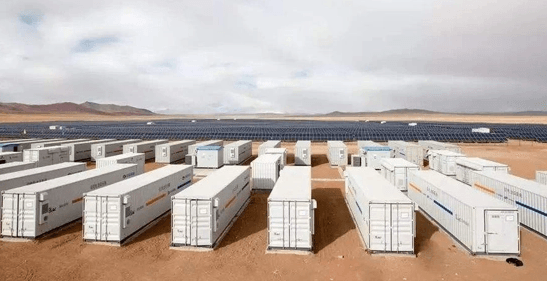In recent years, with the rapid development of MW-level battery energy storage technology at home and abroad, container-type battery energy storage systems have the advantages of capacity, reliability, flexibility, environmental adaptability, etc., and have broad application prospects in power grid systems. The lithium battery energy storage system is more mature than other energy storage batteries, has a complete upstream and downstream industrial chain, and has a large space for cost savings. At the same time, my country's power system is in a state of tight power supply, low transmission capacity utilization, insufficient credit reserves, and low transmission efficiency during peak power consumption periods. Users have also put forward higher requirements for load-side power quality. These problems have accelerated the rapid development of energy storage technology. Today, the editor will give you a detailed introduction to the structure diagram of the energy storage container!

Energy storage technology is one of the key technologies for developing and building smart grids, which can improve the low-energy quality of the grid and increase the utilization rate of renewable energy. With the rapid development of new generation lithium battery materials and improvements in battery technology, lithium batteries have been widely used in energy storage. The container battery energy storage system has the advantages of mature technology, large capacity, movable, high reliability, no pollution, noise reduction, strong adaptability, strong scalability, and easy installation. Therefore, the container energy storage system is used as the energy storage of the power system. Power supply is the future development direction of energy storage.
The MW-class container-type battery energy storage system uses lithium iron phosphate batteries as the energy carrier and is charged through PCS to achieve multiple energy exchanges with the power system. It can access multiple power supply modes such as photovoltaic arrays, wind power, diesel generators, and power grids. The output of the energy storage system can be connected to the power grid, supply various load equipment, electric vehicle chargers, etc.
When the main power source of the microgrid is an energy storage system or a diesel generator, the microgrid has two operating modes, which are used as system voltage or frequency adjustment parameters.
(1) Air storage operation mode: The energy storage battery system maintains the stability of the voltage and frequency of the microgrid system through a certain frequency and certain pressure (V/F) control strategy. When running in this mode, the diesel generator is in a stationary state, and the wind power generation system generally adopts the maximum output power tracking control strategy. When the wind output power is greater than the load consumption power and the state of charge (SOC) of the energy storage battery system is high, it should also Operate under limited power conditions.
(2) Fengcai storage operating mode: diesel generator (controlled by excitation and speed regulation) or wind turbine, microgrid system voltage and frequency reference settings, energy storage battery system uses a certain power control (PQ) strategy to receive background control system instructions , receiving the charge/discharge life of the energy storage battery system.
The MW-class containerized battery storage system includes lithium battery packs, battery management systems, energy conversion systems, control systems and other equipment. The core technology is battery pack, battery cluster structural design, battery system heat dissipation design, battery system protection technology, battery management system, etc. The MW-class container energy storage system consists of a battery system and an energy conversion system. The battery system includes advanced lithium iron phosphate battery modules, battery management systems, and DC short-circuit protection and circuit isolation fuse switches. All equipment is centrally installed on the container. In order to meet the capacity output requirements, multiple battery modules connect the battery cluster, the DC output of each battery cluster in the battery system, connect to the energy conversion system, connect DC-AC and AC-DC (bidirectional), and control power. Figure 2 is the main configuration topology of the MW-class container energy storage system.
